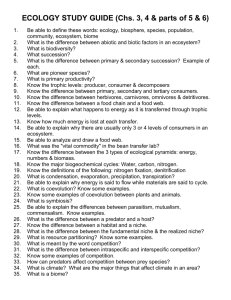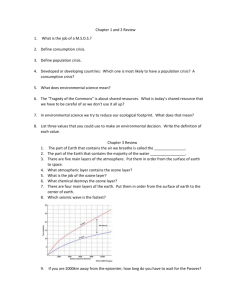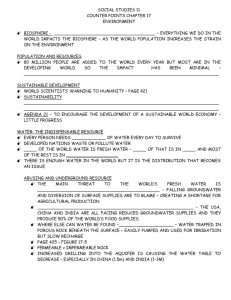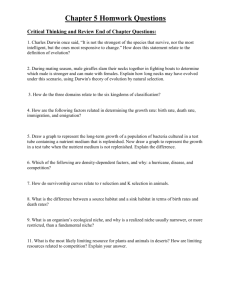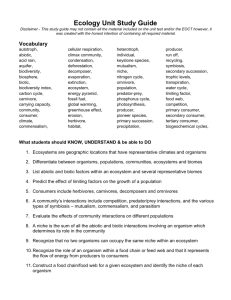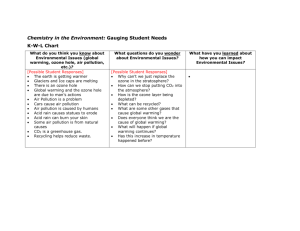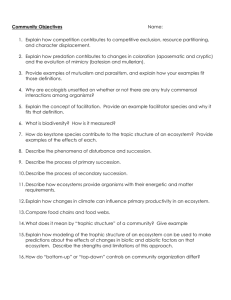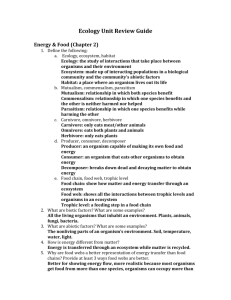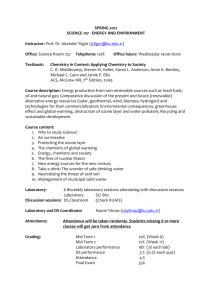Bio J Evolution Study Guide
advertisement
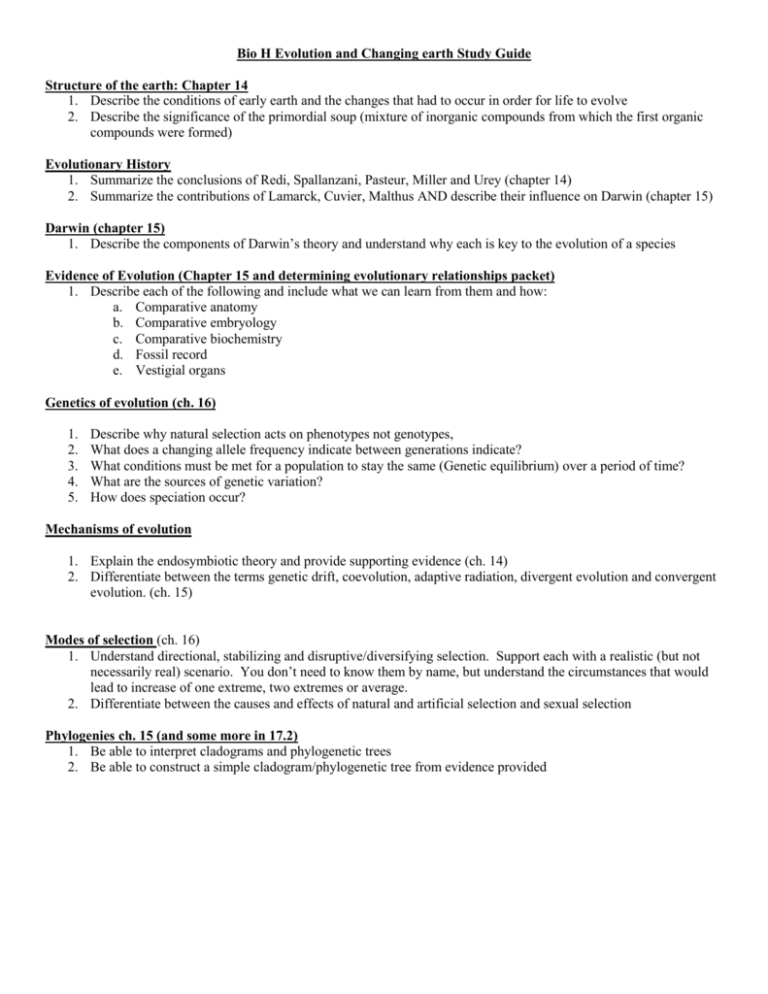
Bio H Evolution and Changing earth Study Guide Structure of the earth: Chapter 14 1. Describe the conditions of early earth and the changes that had to occur in order for life to evolve 2. Describe the significance of the primordial soup (mixture of inorganic compounds from which the first organic compounds were formed) Evolutionary History 1. Summarize the conclusions of Redi, Spallanzani, Pasteur, Miller and Urey (chapter 14) 2. Summarize the contributions of Lamarck, Cuvier, Malthus AND describe their influence on Darwin (chapter 15) Darwin (chapter 15) 1. Describe the components of Darwin’s theory and understand why each is key to the evolution of a species Evidence of Evolution (Chapter 15 and determining evolutionary relationships packet) 1. Describe each of the following and include what we can learn from them and how: a. Comparative anatomy b. Comparative embryology c. Comparative biochemistry d. Fossil record e. Vestigial organs Genetics of evolution (ch. 16) 1. 2. 3. 4. 5. Describe why natural selection acts on phenotypes not genotypes, What does a changing allele frequency indicate between generations indicate? What conditions must be met for a population to stay the same (Genetic equilibrium) over a period of time? What are the sources of genetic variation? How does speciation occur? Mechanisms of evolution 1. Explain the endosymbiotic theory and provide supporting evidence (ch. 14) 2. Differentiate between the terms genetic drift, coevolution, adaptive radiation, divergent evolution and convergent evolution. (ch. 15) Modes of selection (ch. 16) 1. Understand directional, stabilizing and disruptive/diversifying selection. Support each with a realistic (but not necessarily real) scenario. You don’t need to know them by name, but understand the circumstances that would lead to increase of one extreme, two extremes or average. 2. Differentiate between the causes and effects of natural and artificial selection and sexual selection Phylogenies ch. 15 (and some more in 17.2) 1. Be able to interpret cladograms and phylogenetic trees 2. Be able to construct a simple cladogram/phylogenetic tree from evidence provided ECOLOGY Ecosystem structure 1. Know the factors contributing to diversity of life and Importance of Biodiversity 2. Definition of Biosphere, biome, community, population, ecosystem and what is included in each 3. How the terms producer, primary consumer, secondary consumer, Apex or top consumer (predator), omnivore, herbivore, carnivore are related and where they fit in on the energy pyramid. 4. What an energy/biomass pyramids and food chain are. Why pyramids have “less at the top?” 5. Know what succession is and how it works, and what pioneer species, disturbances and climax communities are a. Be able to explain the reasons why early succession and late succession have the characteristics that they do 6. Characteristics of Deserts, Deciduous forests, rainforest, taiga, tundra a. Including general climatic features, example animal and plant life b. Any important adaptations animals make to fit in their biomes Recycling of materials/Energy flow through an ecosystem 1. Know what materials must “cycle” or “recycle” how and why – review biogeochemical cycles 2. Nitrogen fixation: what is it, who does it, why is it important 3. Know how energy is passed from trophic level to trophic level and why only 10% gets passed on Species interactions: 1. Define the following interactions between organisms: commensalisms, mutualism, parasitism, symbiosis, predator/prey 2. Define niche vs. habitat 3. How competition works? When it happens? And what we are all fighting for? 4. What is carrying capacity and why it is significant? What would happen to the “shape” of the energy pyramid if we exceed the carrying capacity of an area? 5. How food webs work (and how each component (decomposer, producer, consumer) fits in). Human Impact on the environment: 1. What is the greenhouse effect and how does it work? 2. How is global warming different from the greenhouse effect? What is causing it? 3. Why was global warming a terrible name for scientists to choose and why are they now referring to it as global climate change? 4. What are the ACTUAL predicted consequences of global warming? 5. What is the function of the ozone layer? 6. What are the effects of damaging the ozone layer? 7. Explain the differences in pH between pure water, rainwater and acid rain. 8. What effect does acid rain have on the ecosystem? 9. What are some of the human actions directly linked to global warming, depletion of the ozone layer and damage to the ecosystems? 10. Why does it appear that there is not enough food/water to feed/hydrate all the people of the world? 11. Why is the rainforest so important to us? 12. Why is deforestation a “double whammy” as far as CO2 production? 13. What are some of the alternative forms of energy other than fossil fuels? What are the ecological pros and cons of each? 14. What is the difference between renewable and nonrenewable resource? Provide examples of each 15. What effect is excessive fertilizer use having on ecosystems? Explain how this is an example how too much of a good thing can be bad.

